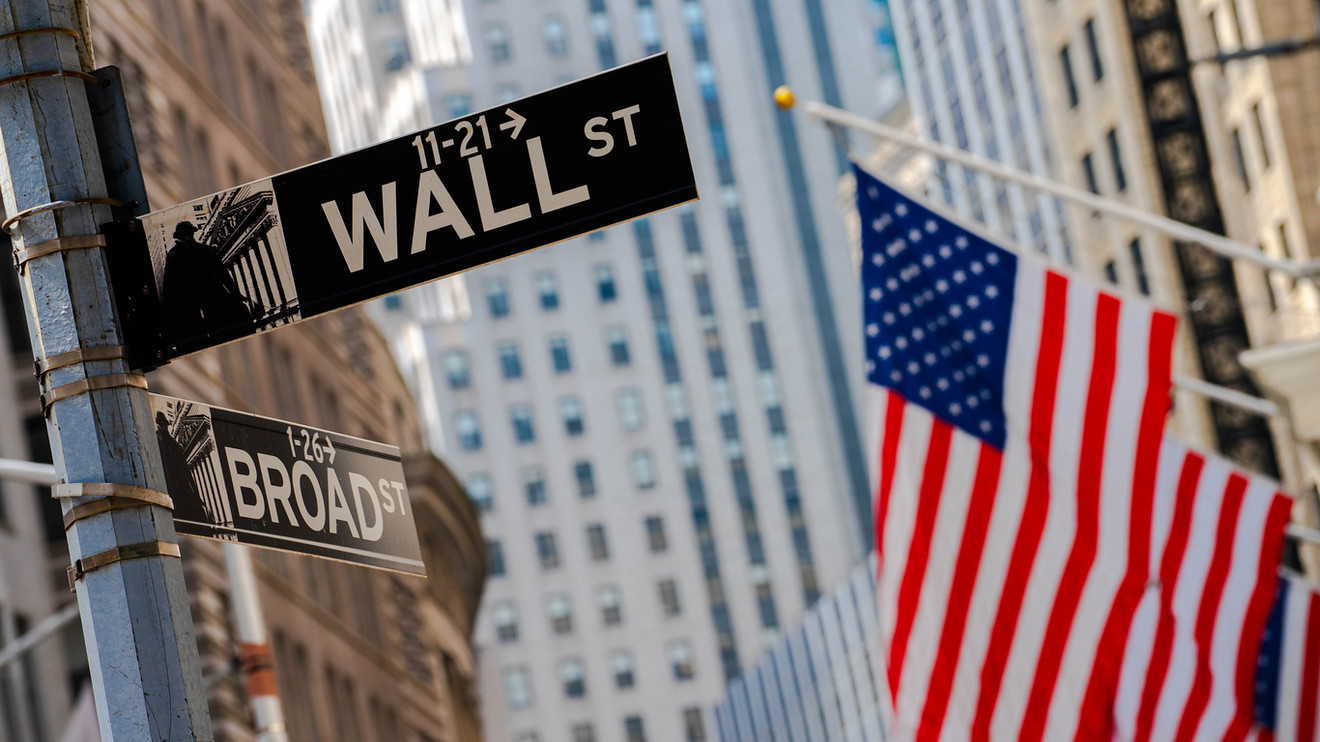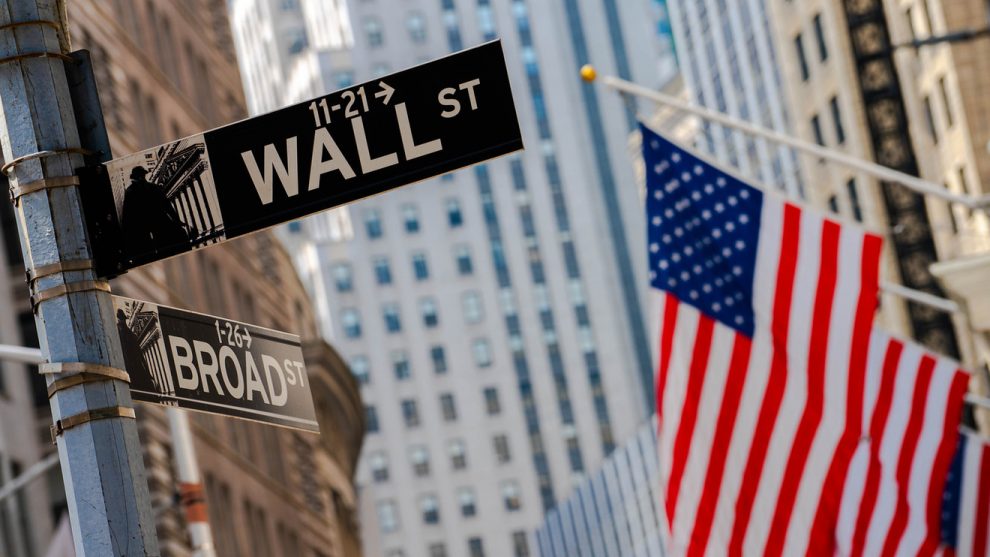
Stocks were up modestly Friday, with the Dow Jones Industrial Average erasing its 2020 losses and the S&P 500 index on track for another record close, as investors sifted through data on U.S. consumer spending and confidence a day after the Federal Reserve announced a policy shift that would allow employment and inflation run hotter than in the past.
What are major benchmarks doing?
The Dow DJIA, +0.47% was up 111 points, or 0.4%, at 28,603, while the S&P 500 SPX, +0.36% rose 10 points, or 0.3%, to 3,495. The Nasdaq Composite COMP, +0.40% COMP, +0.40% advanced 58 points, or 0.5% to 11,683.
On Thursday, the Dow rose 160.35 points, or 0.6%, to close at 28,492.27. The S&P 500 ended with a gain of 5.82 points, or 0.2%, at 3,484.55, a record close. The Nasdaq , which closed at a record on Wednesday, fell 39.72 points, or 0.3%, to close at 11,625.34.
What’s driving the market?
Stocks put in a choppy performance Thursday after Federal Reserve Chairman Jerome Powell announced, in an appearance at the annual Jackson Hole monetary symposium, that the Fed was shifting to a policy of average inflation targeting which would effectively see policy makers end the practice of preemptively hiking interest rates to stave off inflation. Instead, the Fed would allow inflation to run above its 2% target to make up for periods when inflation runs below it — signaling that a long period of ultralow interest rates lies ahead.
Need to Know:The Fed might never hike rates again. Here are growth stocks for the long run, according to one strategist
“By any metric, valuations are in nosebleed territory but there is this entrenched view that the Fed has your back, that the polls are wrong and there will be a Trump sweep, and that a vaccine is coming this fall,” said David Rosenberg, a long-time strategist now running his own firm, Rosenberg Research. “These are hardened views in the marketplace. That’s what’s triggering this ongoing rally in risk equities.”
Reflationary moves in the market, including the steepening of the yield curve and jump in bond yields to a roughly two-month high, is “likely temporary, but may still have more room to run near-term,” Rosenberg said in an interview with MarketWatch.
The Fed’s new stance might as well be “an overt attempt to steepen the yield curve to help out the bank stocks” Rosenberg noted. “They have helped out everyone else – the growth stocks, the credit markets, everything except the value trade, which needs the steeper yield curve. They’ve made no bones about the fact that they want to stimulate financial conditions. I’m not bullish on the economy going into the fourth quarter, and I don’t think the Fed is going to be successful in generating sustainable inflation any more than they have over the past 12 years. But I do think it’s a great buying opportunity for Treasurys.”
See:‘The stock market no longer thinks it needs the economy if it has the Fed,’ David Rosenberg says
Cleveland Federal Reserve President Loretta Mester, in a television interview Friday, said the economic recovery from the pandemic-induced recession “is likely to be a slow one.”
“There is more pain out there that we are going to have to support the economy through,” Mester said.
In Asia, Japanese shares fell sharply, leaving the Nikkei 225 Index NIK, -1.40% down 1.4% after Prime Minister Shinzo Abe said he would resign due to illness. Abe, whose term ends in September 2021, is expected to remain in office until a new party leader is elected and formally approved by parliament.
Data showed U.S. personal income rose 0.4% in July, while consumer spending was up 1.9%. Economists surveyed by MarketWatch expect had expected income to fall another 0.4% after a 1.1% drop in June. Spending was expected to show a 1.6% rise after a 5.6% increase in June.
Spending on durable goods is up 12.2%, while spending on services is down 9.3% for a net shortfall of 4.6% in total consumer demand, said Aneta Markowska, chief financial economist at Jefferies, adding that the variation in spending patterns explains “part of the disconnect between the stock market and the economy, since the former has much less exposure to the service sector than the latter.”
Read:Stop saying ‘stocks are not the economy’
The final reading of the University of Michigan’s August consumer sentiment index came in at 74.1 versus a preliminary reading of 72.8 and up from 72.5 in July.
Which companies are in focus?
- Coca-Cola Co. KO, +2.41% on Friday announced a reorganization and said it would offer voluntary job cuts to 4,000 workers in the U.S., Canada and Puerto Rico. Shares were up 2.3%.
- Shares of HP Inc. HPQ, +5.96% were up 5.6% after reporting fiscal third-quarter sales that exceeded Wall Street estimates by $1 billion, boosted by a pandemic-inspired jump in personal-computer sales.
- Dell Technologies Inc. DELL, +6.40% shares were up more than 5% after it topped profit estimates.
- Shares of Workday Inc. WDAY, +12.73% soared more than 11% after topping earnings forecasts, boosting guidance and announcing a new co-CEO.
- Okta Inc. OKTA, -2.98% shares were off 3% after the identity-management services company topped Wall Street estimates on its quarter and outlook.
- Moderna Inc. MRNA, -0.58% shares gave up early gains scored after the company said it’s in talks with the Ministry of Health, Labor and Welfare of Japan to potentially sell 40 million or more doses of mRNA-127, its COVID-19 vaccine.
- Shares of Tesla Inc. TSLA, -0.24% punched 1.5% higher on the final day before the company’s five-for-one stock split.
What are other markets doing?
The Shanghai Composite SHCOMP, +1.60% rose 1.6% and the Hong Kong’s Hang Seng Index HSI, +0.55% gained 0.6%.
The Stoxx Europe 600 SXXP, -0.51% was off 0.5%, while U.K.’s FTSE 100 benchmark UKX, -0.57% declined 0.6%.
The yield on the 10-year Treasury note TMUBMUSD10Y, 0.730% TMUBMUSD10Y, 0.730% was down 3 basis points at 0.72%. Bond prices move inversely to yields.
Gold futures GCZ20, +2.30% were up 2.4% at $1,979.30 an ounce. U.S. oil futures CL.1, fell 0.1% to $43.01 a barrel.
The ICE U.S. Dollar Index DXY, -0.69%, which tracks the currency versus a basket of six major rivals, slumped 0.8%.
Read:There will be no V-shaped recovery for consumer sentiment, DataTrek says











Add Comment